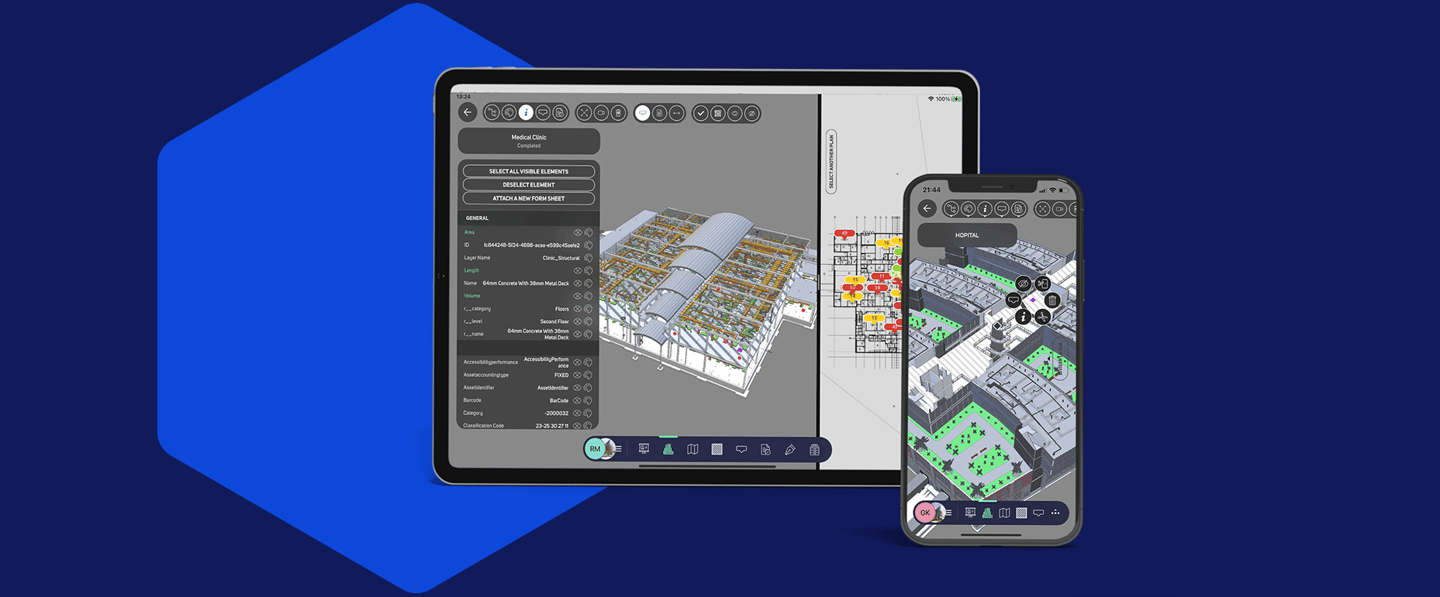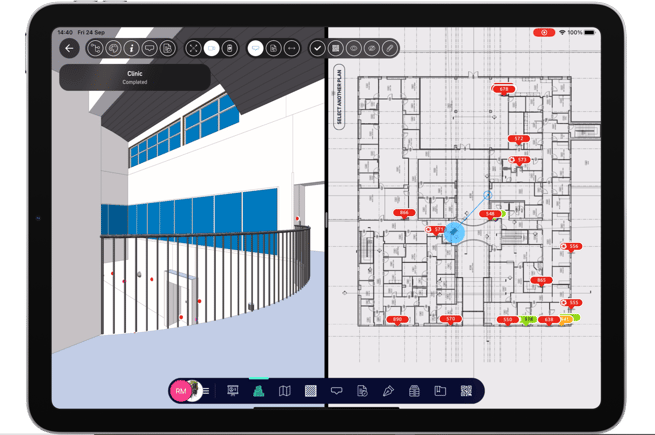Published on
Is split screen the solution to finally bring BIM to the field?

Today BIM is booming. It is increasingly implemented in many projects. It is no longer necessary to demonstrate the value of BIM, yet the current challenge is to democratise it, and this requires innovations that make it possible to deploy it and make it accessible to all project stakeholders. At Kairnial we have taken an ergonomic option combining 2D and 3D: the split screen. Let's take a look at the 3 major benefits that this feature brings to projects.
Facilitating adoption in the field
For the past ten years, the use of tablets has spread throughout construction sites. They have made it easier to consult and annotate 2D plans, edit forms and of course draw up handover defect lists. But the transition to 3D still leaves something to be desired. Indeed, navigating a 3D model with the classic ergonomics of a tablet is counter-intuitive and, above all, inaccurate. This is why a hybrid solution combining 2D and 3D such as the split screen today makes it possible to combine the richness of the BIM model with the simplicity of 2D. By keeping a 2D navigation base, browsing the model is more intuitive and 3D becomes an extension of the experience. All stakeholders then more easily adopt the solution, even those who may feel less comfortable with a digital tool.

Improving technical understanding
Linking up 2D and 3D allows you to better navigate the BIM model and at the same time it gives easier access to the model data. Project managers and contracting authorities then have access to more information related to the building, such as materials or the choices of the different equipment (if these have been added to the model). And since the general contractor can also enrich the model with execution data (e.g. progress of work, check sheets or even problems encountered), the project managers will have a better vision of what is happening at the site. At the same time, if the architect or design office annotates the 3D model, it will be more easily understood by contractors who can look at the explanations on the 2D plan at the same time thanks to the split screen feature. And of course this can also be done from a detailed plan or other types of documents. .png?width=640&name=tablet_bim2%20(1).png)
Visibility adapted to each stakeholder
On a construction project, each stakeholder has their own vision of the site. They each need to look ahead with a view to achieving their objectives. A general contractor will focus on execution, while the contracting authority will want to view the finished work adapted to its use. The split screen allows stakeholders to picture the future impact of their work differently on the same tool. For example, for new first-time buyer housing projects, the project manager will be able to integrate buyer modifications and any additional work more easily in order to display them on the model. Finally, thanks to this combined vision, stakeholders are given a more practical approach to the site and can view the different complexities of the work.
To conclude, the split screen allows all the stakeholders in a construction project to combine the advantages of two worlds. The simplicity and ergonomics of the tablet make it easy to navigate a construction in 2D while powerful 3D models are a real mine of information. This breakthrough makes it possible to significantly increase the accessibility of BIM for everyone during the execution phases.

